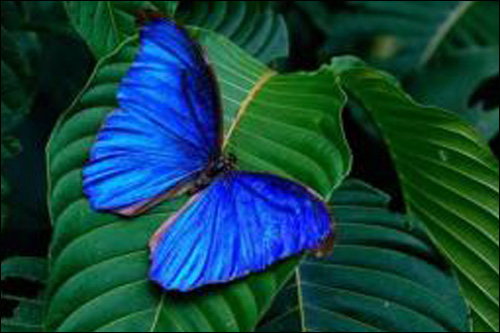The originality of the pigment-free bionic color technology comes from nature’s dazzling blue butterfly (Blue Merpho Butterfly). Due to the specific nano-structured texture on the surface of butterfly wings, under the action of the sun’s rays, different colors, mainly blue tones, appear. The European Union’s Seventh Research and Development Framework Program (FP7) provides 6 million euros of funding, with a total R&D investment of 9.5 million euros. The European PLAST4FUTURE is composed of the European Union’s 6 member states Denmark, Italy, Sweden, Belgium, Spain, and Germany’s scientific and technological circles and industry. R & D team. After more than 3 years of hard work, the team has successfully applied the technology to plastic material injection molding machines, producing various color injection components, not only without the use of pigments, but also saving the corresponding pigment technology, effectively reducing production costs and raw materials And energy consumption. The technology has been commercialized and applied in the EU automobile manufacturing industry.
 After more than 3 years of hard work, the European PLAST4FUTURE R&D team has successfully applied pigment-free bionic color technology to plastic injection molding machines. The various color injection components produced by this molding machine not only do not need to use environmentally harmful pigments, but also eliminate the need for pigment spraying and pigment anti-corrosion processes, reducing production costs, raw materials and energy consumption. At present, the molding machine has been commercialized and applied in the EU automobile manufacturing industry.
After more than 3 years of hard work, the European PLAST4FUTURE R&D team has successfully applied pigment-free bionic color technology to plastic injection molding machines. The various color injection components produced by this molding machine not only do not need to use environmentally harmful pigments, but also eliminate the need for pigment spraying and pigment anti-corrosion processes, reducing production costs, raw materials and energy consumption. At present, the molding machine has been commercialized and applied in the EU automobile manufacturing industry.
Different surface textures of materials will have different light absorption intensity and will show different colors. Using this discovery, the R&D team has developed plastic injection molding machines with different nanostructure texture surfaces to produce plastic components of different colors. This technology has applied for invention patents, and many innovative small and medium-sized enterprises that have been established have obtained dozens of commercial contracts, and the commercialization and application of this technology are being accelerated. The current application areas mainly include automobile manufacturing, plastic casting, semiconductors, anti-glare reading glasses, hardware tools and machine manufacturing industries.
The person in charge of the R&D team said that the technology has a wide range of applications, reduces the cost of the pigment production process, and protects the ecological environment while creating a colorful life for the modern economy and society. For example, in the past, it was necessary to classify recycled products of different colors, and there would be no classification problem with this technology.
Post time: Dec-14-2021

